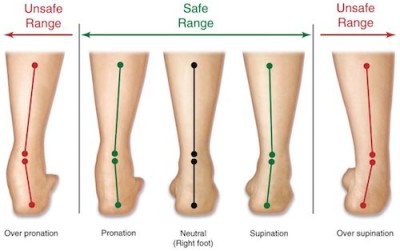Buying the right shoes is an investment in foot health. But how do you find ones that fit properly and provide adequate support?
Start with your own feet, and look at what’s already in your closet. Stand barefoot on a piece of paper or cardboard, and trace the shape of each foot. Now take your shoes, one by one, and place them on top of the drawing. If you’re like most people, your “comfortable” shoes will closely match the outline of your own feet.
Identify the shoes that cause pain. If you’re a woman, most of these will be shoes with narrow toes or high heels. Check to see if the toe of the shoe is narrower or shorter than your own toes.
When you’re ready to replace some of that uncomfortable footwear, these tips can help:
Wait until the afternoon to shop for shoes — your feet naturally expand with use during the day and may swell in hot weather.
Wear the same type of socks that you intend to wear with the shoes.
Have the salesperson measure both of your feet — and get measured every time you buy new shoes. If one foot is larger or wider than the other, buy a size that fits the larger foot.
Stand in the shoes. Make sure you have at least a quarter- to a half-inch of space between your longest toe and the end of the shoe.
Walk around in the shoes to determine how they feel. Is there enough room at the balls of the feet? Do the heels fit snugly, or do they pinch or slip off? Don’t rationalize that the shoes just need to be “broken in” or that they’ll stretch with time. Find shoes that fit from the start.
Trust your own comfort level rather than a shoe’s size or description. Sizes vary from one manufacturer to another. And no matter how comfortable an advertisement claims those shoes are, you’re the real judge.
Feel the inside of the shoes to see if they have any tags, seams, or other material that might irritate your feet or cause blisters.
Turn the shoes over and examine the soles. Are they sturdy enough to provide protection from sharp objects? Do they provide any cushioning? Also, take the sole test as you walk around the shoe store: do the soles cushion against impact? Try to walk on hard surfaces as well as carpet to see how the shoes feel.
Years of wear and tear can be hard on our feet. So can disease, poor circulation, improperly trimmed toenails, and wearing shoes that don’t fit properly. Problems with our feet can be the first sign of more serious medical conditions such as arthritis, diabetes, and nerve and circulatory disorders.
What can you do to prevent foot problems?
Check your feet regularly, or have a member of your family check them. Podiatrists and primary care doctors (internists and family practitioners) are qualified to treat most foot problems. Sometimes the special skills of an orthopedic surgeon or dermatologist are needed.
It also helps to keep blood circulating to your feet as much as possible. Do this by putting your feet up when you are sitting or lying down, stretching if you’ve had to sit for a long while, walking, having a gentle foot massage, or taking a warm foot bath. Try to avoid pressure from shoes that don’t fit right.
Try not to expose your feet to cold temperatures. Don’t sit for long periods of time (especially with your legs crossed) and don’t smoke.
END


Be the first to comment